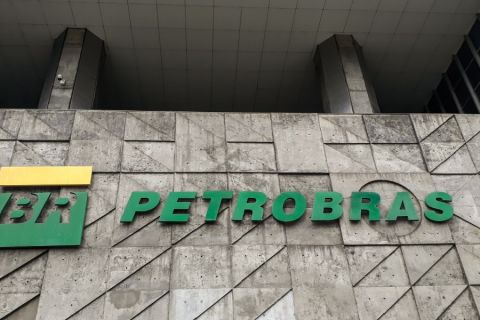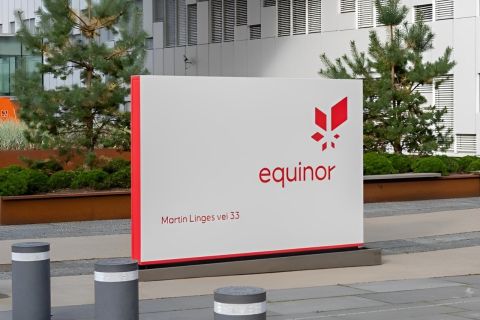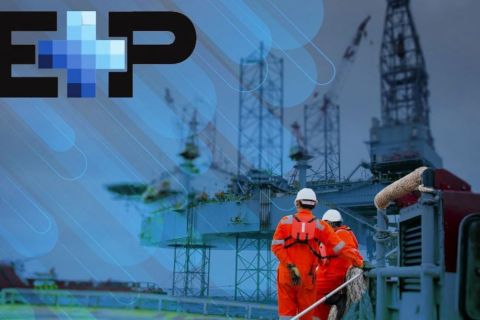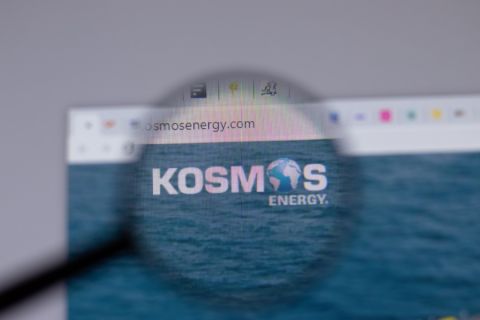Brazil’s Petrobras has solidified its prowess as a presalt production powerhouse, setting records that have surpassed the 520,000 bbl/d mark with 25 wells just eight years after oil was discovered in the presalt layers.
The deepwater giant is placing its bets on the geologically challenging deepwater resource in the Campos and Santos basins, hoping it will boost the company’s overall production and generate massive cash flow despite having consistently missed production targets. Crucial to achieving its goals are platforms capable of tapping the vast offshore deposits.
Plans were for nine production units to lift capacity in 2013, with an annual growth target of 7.5% in 2014. However, a combination of setbacks hampered efforts. Demobilization of FPSO Brasil, the 103-day stoppage of Marlim P-20 due to a fire, delays in platform deliveries by the shipyards and a longer execution time were among them, Petrobras said.
The trouble may be well worth it, considering Brazil is believed to have an estimated 13 Bbbl of proven oil reserves, according to the U.S. Energy Information Administration.
“Petrobras is the major player [in Brazil], accounting for more than 90% of operated production and holding a dominant position in exploration areas. In the last two years there has been an abundance of licensing—something that hadn’t taken place since 2008. Now we’re seeing a revival in the sector as a whole,” said Ross Lubetkin, upstream analyst, Latin America for Wood Mackenzie. “Companies have already started the process of acquiring seismic. You should see a significant number of exploration wells that companies have already committed to drill in the next few years. Hopefully a series of discoveries will bring a lot of new players to the board in terms of development from companies outside Petrobras.”
But risks remain both above ground and below seabed.
Promising presalt
Petrobras is counting on presalt production to replace declining volumes from the Campos Basin, which has historically dominated offshore production and reserves for Brazil. Presalt fields now account for 22% of Petrobras’ oil production in Brazil. However, that percentage is on course to jump to 52% of the country’s total production by year-end 2018, when total output is expected to hit 3.2 MMbbl/d, aided by 19 new presalt production units operating in the Santos Basin.
In August Petrobras confirmed the extension of the Jupiter discovery in Santos Basin presalt Block BM-S-24 following drilling operations at the Apollonia well. The well, the fourth drilled in the Jupiter area, confirmed a hydrocarbon column of about 313 m (1,027 ft), with rocks showing good porosity and permeability conditions, Petrobras said in a news release.
In addition to the gas cap and condensate, the well verified an oil column some 87 m (285 ft) thick. Based on samples collected, Petrobras said the fluids are similar to those found in the pioneer Jupiter well and two previously drilled extension wells.
However, “With the presalt relatively new, there is a great deal of uncertainty about how the reservoirs are going to perform in the future and how much they will deliver,” said Ivan Cima, lead analyst, Latin America for Wood Mackenzie. “There are questions about gas reinjection and the impact that will have on the reservoir.”
Getting to the hydrocarbons presents a myriad of challenges. Aside from the difficulties associated with drilling beneath as much as 1,981 m (6,500 ft) of salt, the reservoirs’ complex heterogeneous layered carbonates pose challenges for reservoir characterization, seismic analysis, well engineering and flow assurance.
According to a statement from Halliburton, which is active in Brazil, “Drilling these wells is proving to be extremely difficult, with low penetration rates. The tendency for borehole deviation while drilling in salt elevates the importance of precise directional control. Flow assurance related to paraffin deposition, hydrate and scaling control is also a challenge. In addition, the presalt environment is very corrosive, with significant amounts of CO2 and H2S present. This places a high demand on special cement and metallurgy throughout the drilling and completion process.”
Technology remains an area of focus in the region by Halliburton, which opened a technology center at the Federal University of Rio de Janeiro Technology Park in 2013.
“The research and development center provides technology solutions for exploration and production focusing on deepwater field development and technologies to maximize productivity from mature fields,” Harold Mesa, Halliburton’s country vice president for Brazil, told E&P. The center is addressing offshore challenges associated with drilling, well integrity, completions, reservoir characterization, flow assurance and production optimization.
But efforts are not being limited to offshore reservoirs, namely presalt carbonates, or revitalizing mature fields. Onshore solutions are being targeted as well, as Mesa said the company expects to see more projects targeting tight gas and conventional gas reservoirs.
Halliburton has some new technology that aims to boost E&P efforts in Brazil, but the service company is not sharing specifics yet due to confidentiality agreements. “We can mention that most of them will have a great impact on well construction, reservoir characterization and production, enabling our customers to optimize the final recovery of their reservoirs in a safe and economic way,” Mesa said.
Production from presalt wells has exceeded expectations so far. “We have seen, especially recently, very positive news,” Cima said.
At the Lula and Sapinhoá fields, flow rates have surpassed 30,000 bbl/d per well.
The appraisal wells have delivered at rates much higher than expected, Cima said, noting that as a result, the projects may require fewer wells for development. That could amount to a significant savings, considering drilling and completing a well can cost about $120 million plus another $60 million for subsea umbilicals, risers and flowlines.
However, presalt development is still relatively at infancy stage, Cima pointed out, with many key projects such as the Lapa, Lula and the giant Libra Field—believed to hold up to an estimated 12 Bbbl of recoverable oil—still at early stages of development. In August the Libra consortium announced it started drilling the first exploration well in the Libra area. The 3-RJS-731 well is the first of two wells planned for the first phase of the Minimum Exploration Program, Petrobras said in a news release. The plan also includes an extended well test scheduled to begin in December 2016.
“We’ll have to wait and see what comes out of it,” Cima said. “But so far the news has been fairly positive.”
That has not been the case above the seabed.
Obstacles remain
Local content is the most pressing issue facing Brazil’s offshore sector. A group of shipbuilders even met with Brazilian government officials seeking changes to local content rules, hoping to get permission to have more construction and engineering work done in Asia, according to a Bloomberg report. Orders have fallen behind schedule at local yards, causing delays.
“The issue around local content and the impact that has on the development and hindrance on current growth cannot be overlooked. The local content requirement is partially responsible for some of the delays that we’ve seen,” Cima said. “Petrobras has consistently failed to deliver on expectations in terms of production targets, and local content delays will be an even more key factor to watch in the future.”
In an emailed reply to questions from the news agency, Petrobras said that 33 new wells will be connected in the second half at P-62 and sister platform P-55, each platform with the capacity to lift 180,000 bbl/d.
“New production systems will go onstream in 2014 to ensure sustained growth, as outlined in Petrobras’ 2014-18 Business and Management Plan, which has set a 7.5% rise by the end of 2014, with a margin of tolerance of one percentage point upward or downward,” Bloomberg reported, citing the Rio de Janeiro-based company’s May output report.
However, there have been delays, including with the P-62 platform.
“The amount of repairs needed now aren’t small,” Jose Maria Rangel, a union leader and former board member, said in the article. “They were having problems connecting wells on both P-62 and P-55. Obviously, if you have setbacks this will reflect on production results.”
Lubetkin also noted problems with platforms that are set to be delivered.
“We’ve seen quite a few instances where operational mishaps and equipment bottlenecks have slowed down the development of these projects,” he said. “Longer term, local content will continue to have a large effect on meeting project deadlines. Getting the nascent Brazilian shipbuilding industry up to speed to deliver the new drilling and production facilities represents one of the biggest challenges.”
However, Cima added that the comments are in no way a knock on Petrobras or Brazil because what Petrobras is trying to do is unprecedented.
In all, the company has more than 900 projects planned as part of a five-year investment plan of about $237 billion.
“It’s the most aggressive and ambitious deepwater development plan that any company has ever attempted to undertake, and even delivering part of that is a very successful feat,” Cima said. “Now, we can argue whether Petrobras has too much on its plate or not. But regardless, what they are doing is still very impressive in the grand scheme of things.”
Recommended Reading
SilverBow Makes Horseshoe Lateral in Austin Chalk
2024-05-01 - SilverBow Resources’ 8,900-foot lateral was drilled in Live Oak County at the intersection of South Texas’ oil and condensate phases. It's a first in the Chalk.
Petrobras Sending Nearly Half of Oil Exports to China
2024-04-30 - Conflict in the Middle East has enabled Brazil’s state-owned Petrobras to change the flow of its oil exports, with China being the primary beneficiary, followed by Europe.
Equinor Says EQT Asset Swap Upgrades International Portfolio
2024-04-30 - Equinor CFO Torgrim Reitan says the company’s recent U.S. asset swap with EQT Corp. was an example of the European company “high-grading” its international E&P portfolio.
E&P Highlights: April 29, 2024
2024-04-29 - Here’s a roundup of the latest E&P headlines, including a new contract award and drilling technology.
Kosmos Energy’s RBL Increased, Maturity Date Extended
2024-04-29 - Kosmos Energy’s reserve-based lending facility’s size has been increased by about 8% to $1.35 billion from $1.25 billion, with current commitments of approximately $1.2 billion.





